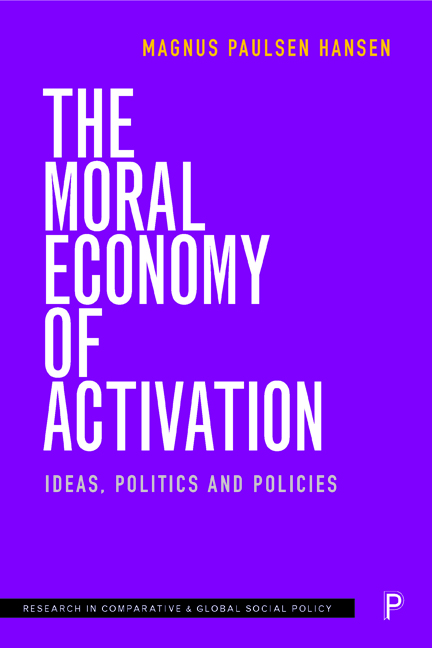5 - Turning Solutions into ‘Structural’ Problems: Unemployment Insurance, Denmark, 1992–93
Published online by Cambridge University Press: 10 March 2021
Summary
The reform process resulting in the ‘Active Labour Market Policy Act’ (henceforth ALMPA) began with the adoption of an experimental and temporary law in 1992 that was set to expire at the end of 1993. Whereas the French PARE was rooted in an explicit call for reform that was clearly confined to the unemployment system and the negotiation of its convention, ALMPA is an example of a more disordered process with a variety of parallel test situations in a number of instruments that somehow became tied together. Figure 5.1 provides an overview of the key events during the debate up to the passing of ALMPA.
ALMPA introduced an individual contract quite similar to PARE while combining it with a number of different instruments: leave schemes to ease access to the labour market, job training for unemployed people and employment offers that jobseekers, after a period of time, would have to accept in order to continue to receive compensation. Further, it changed the rules of entitlement. While the PARE reform process was mainly driven by the unions and employers’ organisations, the ALMPA reform was orchestrated by the state. This different dynamic is the result of the particular history of the Danish unemployment insurance system, which is presented in the first two sections of the chapter. As in Chapter 4, historical sources are read with a view to understanding the tensions and compromises between cities of unemployment that have ‘sedimented’ into governance systems for insured unemployed people, thus providing the context for the process of ALMPA. The following four sections each present a test situation concerning a specific problem relating to the governing of the unemployment insurance system: wages, financing, subsidised jobs and leave schemes. Finally, the chapter concludes with an analysis of the changes that the ALMPA entailed and a brief look at subsequent changes to the system.
Creation and crises of the Danish unemployment insurance system
Unlike in France, where the creation of a national, contributionbased, unemployment insurance system was initiated by the state, the Danish equivalent was the direct result of pressure from the labour movement, which from the beginning was much more homogenous than in France, and closely allied with the Social Democratic Party.
- Type
- Chapter
- Information
- The Moral Economy of ActivationIdeas, Politics and Policies, pp. 91 - 118Publisher: Bristol University PressPrint publication year: 2019



